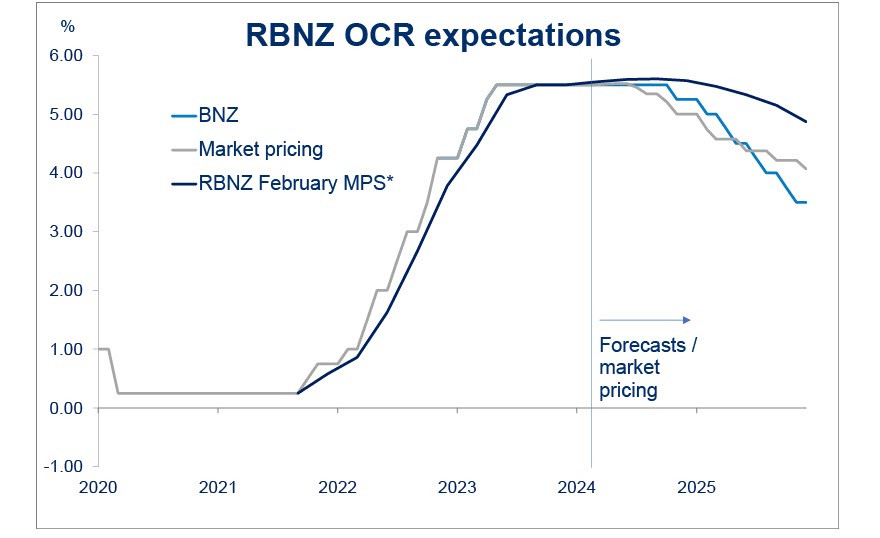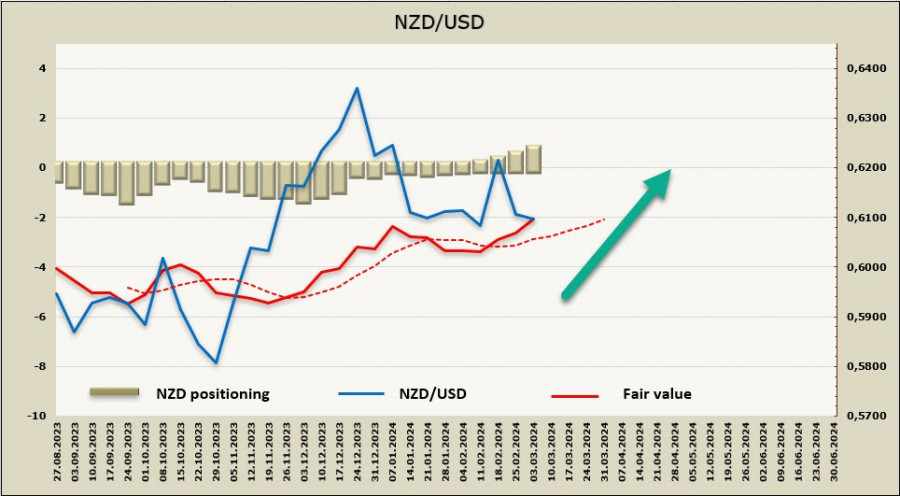
The New Zealand dollar depreciated after the Reserve Bank of New Zealand left the official cash rate (OCR) unchanged last week. The market anticipated this outcome, but there was a significant probability that the RBNZ would raise the rate for the last time, and maintaining the current monetary policy led to some disappointment. The RBNZ lowered its estimated peak rate to 5.60% from 5.69%, and although a rate hike was discussed during the meeting, officials ultimately reached a "firm consensus" to leave the rate unchanged.
The decision to keep the rate unchanged implies that the RBNZ considers current conditions enough to return inflation to the target level of 2%. Inflation in the fourth quarter fell below the RBNZ's November forecast, and risks to inflation prospects became "more balanced." Market expectations for the OCR currently suggest that there will be no further rate hikes, and the current 5.5% level is seen as the peak.

Certainly, such a reassessment could not go unnoticed, and the NZD exchange rate significantly declined after the decision was announced, although it had no more reasons to exhibit a sharp decline. The market is currently anticipating two rate cuts by the end of the year, totaling 50 basis points, slightly more than the 30 basis points before the meeting. However, considering that the Federal Reserve is expected to implement 3 or even 4 rate cuts, the kiwi has decent chances to strengthen due to a shift in yield differentials in its favor.
There are no significant macroeconomic news from New Zealand this week, so the U.S. labor market data, which will be published on Friday, will primarily determine the dynamics of the currency market. It is also important to take cues from the ADP private employment report and the JOLT job openings report. There might be a surge in volatility during Fed Chairman Powell's testimony, as the market closely watches such appearances.
A correction in the U.S. stock market and a decrease in risk appetite contributed to a decline in bond yields; such a reaction may increase demand for defensive assets.
Positioning on NZD has shifted from neutral to bullish, with the net long position increasing by $212 million to $621 million, pushing the price higher.

NZD/USD could fall towards the 0.6030/40 support, but it is still unlikely for it to fall further. We anticipate a low to form just above the 0.6030/40 support, and the kiwi will resume its upward movement towards the technical level of 0.6198, and then 0.6238.